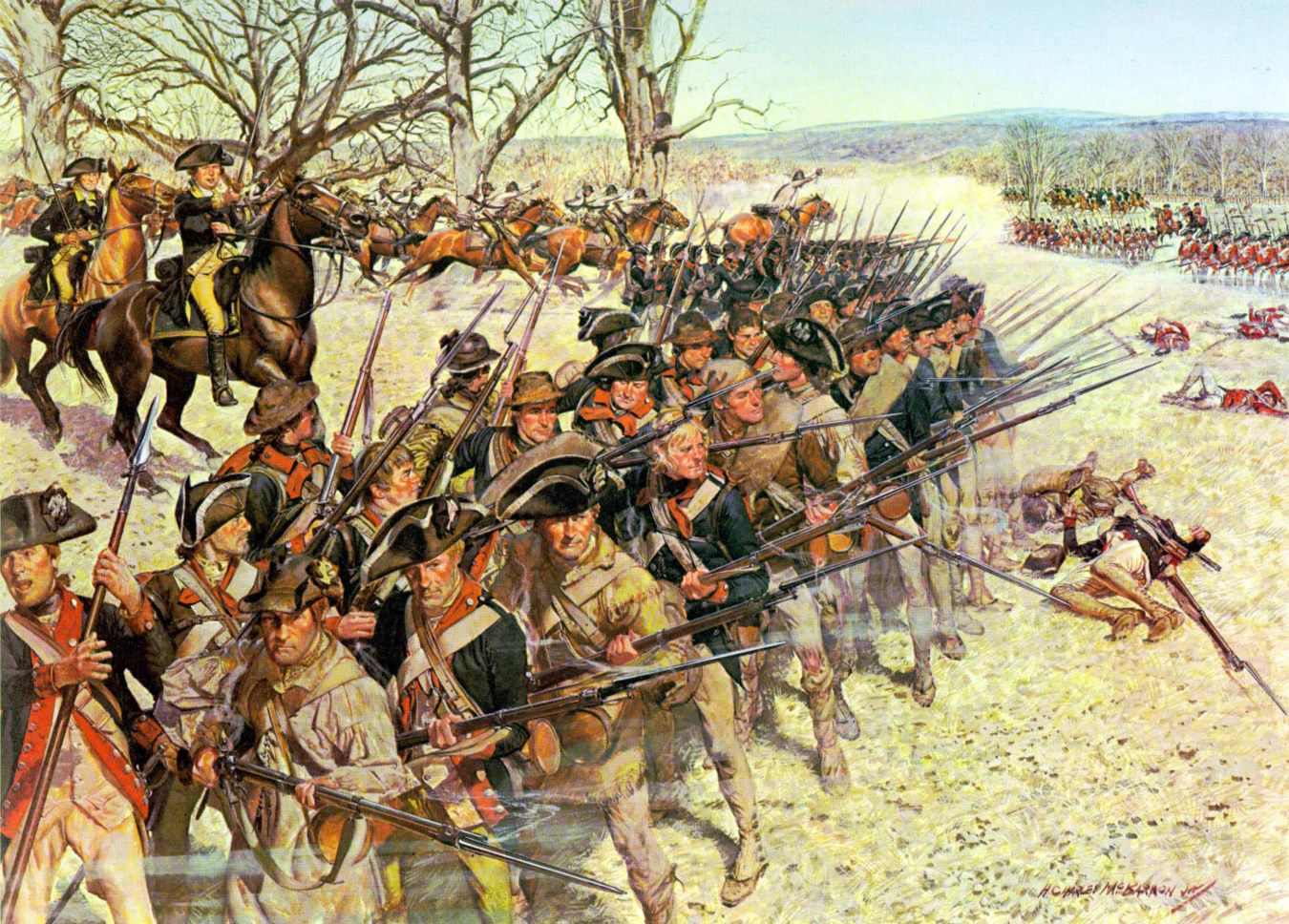On This Day in History
March 15, 1781
The Battle of Guilford Courthouse is the beginning of the end
On this day in history, March 15, 1781, the Battle of Guilford Courthouse is the beginning of the end of the Revolutionary War. American General Nathanael Greene met Major General Charles Cornwallis in the woods around the small town of Guilford, North Carolina. In the previous two years, the British army had secured much of Georgia and South Carolina and set their sights on North Carolina.
The Americans on the other hand, had suffered a string of defeats, losing the two southernmost states and an army of 4,000 men at the disastrous Battle of Camden in August, 1780. General Nathanael Greene was sent south to take over the southern Continental Army in place of disgraced General Horatio Gates. Greene's natural skill and wisdom quickly turned things around in the south.
 General Nathanael Greene
General Nathanael GreeneFollowing two significant American victories at the Battles of King's Mountain and Cowpens, General Cornwallis was determined to destroy Greene's army which was retreating through North Carolina. Greene escaped across the Dan River into Virginia and the two sides retrenched and resupplied for several weeks. General Greene had already been at the area surrounding Guilford, determined that it was an ideal place to face Cornwallis and hoped to entice him to battle there.
On March 14, Cornwallis learned that Greene's army was near Guilford Courthouse and decided to strike. Greene had nearly 5,000 men, while Cornwallis had only 1,900, putting him at a severe disadvantage. More than half of Greene's men were untrained Virginia militia, however, while all of Cornwallis' men were battle-ready troops.
 Battle of Guilford Courthouse by Hugh Charles McBarron, Jr.
Battle of Guilford Courthouse by Hugh Charles McBarron, Jr.Cornwallis' men first engaged Green's around noon on the 15th. Greene's men were arrayed in three lines several hundred feet apart, through mostly wooded terrain that was very difficult to get through. The British were able to cut through the first two lines, but with significant casualties. Many of the green American militia members fled at the first hint of danger. After a few hours of fighting, Greene finally ordered a retreat in order to prevent the loss of his army as had happened to General Gates at Camden.
Due to the American withdrawal, the British technically won the Battle of Guilford Courthouse, but at a huge cost. Cornwallis lost more than 25% of his force to death, injury or desertion, while the Americans lost only around 6%. Greene had preserved his army to fight another day, while Cornwallis was now forced to march back to the coast to recruit and resupply.
Camped at Wilmington and unable to recruit a large following of Loyalist supporters as he had hoped, Cornwallis finally decided to march north to Virginia to meet with another British army holding the Virginia coast under the direction of Major General William Phillips and the traitor, Benedict Arnold. It was at this time that the combined forces made their headquarters at Yorktown and were soon surrounded by the joint American and French forces of George Washington and the Comte de Rochambeau, leading to Cornwallis' surrender and the end of major hostilities in the war.
Read what happened on other days in American history at our On This Day in History section here.
This Week in History
- March 15, 1781 - The Battle of Guilford Courthouse is the beginning of the end
- March 16, 1751 - James Madison is born
- March 17, 1776 - The British Army abandons Boston
- March 18, 1778 - The Battle of Quinton's Bridge
- March 19, 1734 - Thomas McKean is born
- March 20, 1782 - The Anti-American British government falls
- March 21, 1825 - Marquis de Lafayette lays cornerstone for Nathanael Greene Memorial
Published 3/15/13
Revolutionary War and Beyond Home
Like This Page?
© 2008 - 2022 Revolutionary-War-and-Beyond.com Dan & Jax Bubis










Facebook Comments